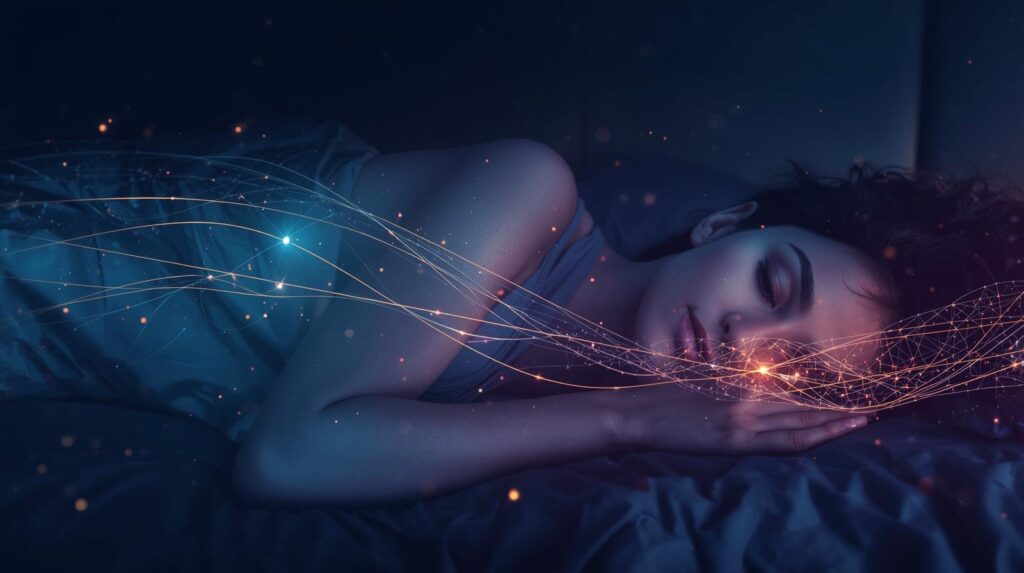In the relentless pursuit of fitness goals, the spotlight often shines brightest on rigorous training regimens and meticulously planned nutritional strategies. Athletes and fitness enthusiasts dedicate countless hours to perfecting their workouts and optimizing their diets, yet one of the most potent tools for performance enhancement and recovery often remains in the shadows: sleep. Far from being a passive state of inactivity, sleep is a highly active and essential biological process during which the body undergoes critical repair, rebuilding, and consolidation. For anyone serious about maximizing their physical potential, understanding and optimizing sleep is not merely a luxury but a fundamental necessity. This blog post will delve into how biohacking your sleep can significantly accelerate fitness recovery, enhance muscle growth, and improve overall athletic performance, offering practical insights to transform your night-time routine into a powerful ally for your fitness journey.
Why Sleep is Crucial for Athletes and Fitness Enthusiasts
Sleep is arguably the most potent recovery tool available to athletes and fitness enthusiasts. It is during this period that the body performs vital restorative functions that are impossible during waking hours. Neglecting sleep can lead to impaired performance, increased injury risk, and hindered muscle growth, effectively undermining all the hard work put into training and nutrition.
Muscle Repair and Growth
One of the primary reasons sleep is indispensable for fitness is its profound impact on muscle repair and growth. During deep sleep, the body experiences a significant surge in the release of growth hormone (GH) [1]. This hormone is crucial for tissue repair, muscle protein synthesis, and fat metabolism. It helps in the regeneration of cells and tissues, making it a cornerstone of post-exercise recovery. An athlete’s body actively works to repair and grow muscles during sleep, making it a non-negotiable component of any serious training program [2].
Energy Restoration
Beyond muscle repair, sleep is vital for replenishing energy stores. During intense physical activity, the body depletes its glycogen reserves, which are the primary fuel source for muscles. Adequate sleep allows the body to restore these glycogen levels, ensuring that muscles are refueled and ready for the next training session. This process is critical for reducing fatigue and improving stamina, enabling consistent high-level performance.
Hormonal Balance
Sleep plays a pivotal role in regulating a multitude of hormones that directly influence athletic performance and overall health. Chronic sleep deprivation can disrupt the delicate balance of hormones such as cortisol (the stress hormone) and testosterone. Elevated cortisol levels can lead to muscle breakdown and hinder recovery, while reduced testosterone can negatively impact muscle growth and strength. Sleep also influences appetite-regulating hormones like ghrelin and leptin, which control hunger and satiety, thereby impacting body composition and energy intake.
Injury Prevention and Cognitive Function
Adequate sleep contributes significantly to injury prevention by improving reaction time, coordination, and motor control. A well-rested body is more agile and less prone to errors that can lead to injuries. Furthermore, sleep is essential for cognitive function, enhancing focus, decision-making, and learning. For athletes, this translates to sharper mental acuity during workouts, better strategic thinking in competition, and improved skill acquisition.
Biohacking Your Sleep Environment
Optimizing your sleep environment is a fundamental step in biohacking your way to better rest. Creating a sanctuary conducive to sleep can dramatically improve sleep quality, regardless of external stressors.
Darkness
Light, particularly blue light, is a powerful regulator of our circadian rhythm, the body’s natural sleep-wake cycle. Exposure to light at night can suppress melatonin production, a hormone crucial for initiating sleep. Therefore, creating a dark sleep environment is paramount. This involves:
- Blocking out all light: Use blackout curtains, blinds, or even an eye mask to ensure complete darkness. Even small amounts of light can disrupt sleep.
- Minimizing blue light exposure before bed: Avoid screens from phones, tablets, computers, and televisions for at least an hour before sleep. If screen use is unavoidable, utilize blue light filters or wear blue light blocking glasses.
Temperature
The ideal sleep temperature is cooler than most people realize. The body’s core temperature naturally drops as it prepares for sleep. Maintaining a bedroom temperature between 60-67°F (15-19°C) can facilitate this natural cooling process and promote deeper, more restorative sleep. Strategies for achieving this include:
- Adjusting your thermostat.
- Using cooling mattress pads or breathable bedding.
- Ensuring good air circulation in the room.
Quietness
Noise can be a significant disruptor of sleep, even if you don’t consciously wake up. Creating a quiet sleep environment helps maintain sleep continuity and depth. Consider:
- Using earplugs or noise-canceling headphones.
- Employing a white noise machine or fan to mask disruptive sounds.
- Minimizing external noise sources where possible.
Establishing a Consistent Sleep Schedule and Routine
Consistency is key to regulating your circadian rhythm and improving sleep quality. Your body thrives on routine, and a consistent sleep schedule signals to your internal clock when it’s time to wind down and wake up.
Circadian Rhythm Alignment
Going to bed and waking up at the same time every day, even on weekends, helps to solidify your circadian rhythm. This regularity reinforces the natural hormonal fluctuations that govern sleep and wakefulness. Exposure to natural light, especially in the morning, further helps to set your internal clock and promote alertness during the day.
Pre-Sleep Rituals
Developing a relaxing pre-sleep routine signals to your body that it’s time to transition from wakefulness to sleep. This routine should be calming and free from stimulating activities. Examples include:
- Reading a physical book.
- Taking a warm bath or shower.
- Practicing meditation or deep breathing exercises.
- Avoiding stimulants like caffeine and heavy meals close to bedtime.
Leveraging Technology for Sleep Optimization
Modern technology offers an array of tools that can provide valuable insights into your sleep patterns and help you optimize your rest. While not a substitute for good sleep hygiene, these devices can be powerful allies in your biohacking journey.
Wearable Sleep Trackers
Devices like smartwatches, fitness trackers, and smart rings (e.g., Oura Ring) can monitor various sleep metrics, including sleep stages (REM, light, deep), heart rate, and heart rate variability (HRV). This data can help you:
- Identify patterns in your sleep quality.
- Pinpoint potential disturbances.
- Track the effectiveness of your sleep biohacking interventions.
Smart Alarms and Lighting Systems
Some technologies are designed to work with your natural sleep cycles. Smart alarms can wake you during a light sleep stage, making you feel more refreshed. Lighting systems that mimic natural sunrise and sunset patterns can also help regulate your circadian rhythm, promoting a more natural wake-up and wind-down process.
Conclusion: Sleep Your Way to Peak Performance
Sleep is not merely a period of rest; it is a dynamic and essential process that directly impacts every aspect of your fitness journey. By embracing the principles of sleep biohacking – optimizing your environment, establishing consistent routines, and leveraging technology for insights – you can significantly accelerate recovery, enhance muscle growth, improve hormonal balance, and sharpen cognitive function. Prioritizing quality sleep is a fundamental investment in your athletic performance and overall well-being. It’s time to recognize sleep as the powerful, performance-enhancing tool it is and integrate it as a cornerstone of your biohacking strategy. By doing so, you’re not just sleeping; you’re actively building a stronger, more resilient, and higher-performing version of yourself.
References:
[1] Physiology of growth hormone secretion during sleep – PubMed. Pubmed.ncbi.nlm.nih.gov. Available at: https://pubmed.ncbi.nlm.nih.gov/8627466/
[2] Why rest and recovery is essential for athletes – UCHealth Today. Uchealth.org. Available at: https://www.uchealth.org/today/rest-and-recovery-for-athletes-physiological-psychological-well-being/


